At first glance, Andretta in Himachal Pradesh presents an array of familiar visuals associated with a place that borders tourist towns — steel-framed momo stalls, travel counters with colourful paper stamps to ferry you to the farthest reaches of the Himalayas, and general stores that sell everything from local soaps to souvenirs.
However, this nondescript village, around nine kilometres from Palampur, is home to one of India’s oldest pottery studios, Andretta Pottery. Last year, in October, I stumbled upon it accidentally, after navigating a few alleyways and rundown shops. The studio was a world of its own — young students worked dexterously on calcified kilns, structuring vases and pots into ovoid, pomiform and pear shapes. The history of the place dates back to the 1980s and the efforts of the late Sardar Gurucharan Singh, who was among the first studio potters in India.
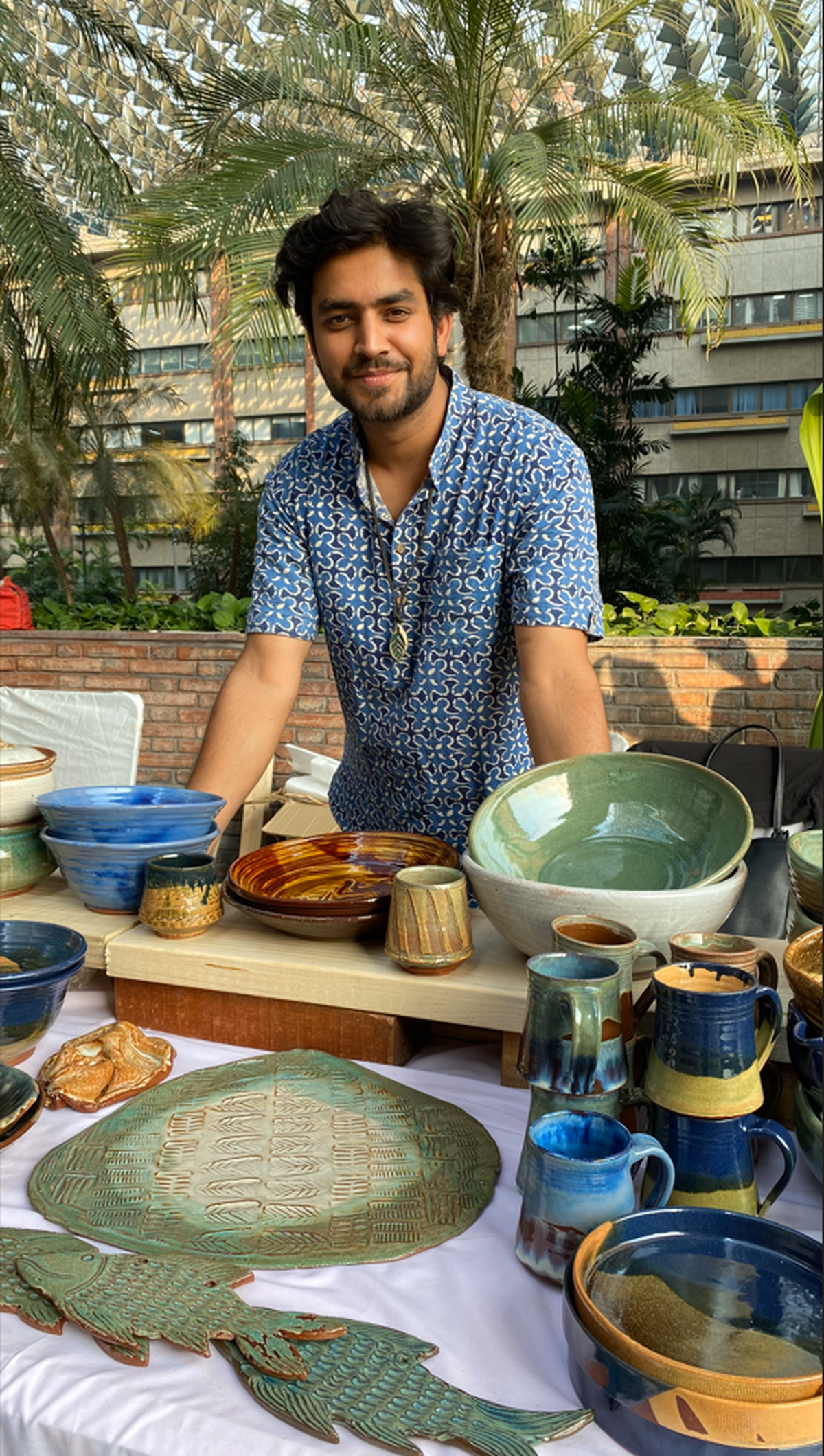
Shubham Sankhyan of Andretta Pottery
Shubham Sankhyan, 27, who now runs the pottery studio-cum-school, has been immersed in the world of clay ever since his father joined the studio in the late 1990s. And, of late, he’s been observing a marked change. “When we started teaching around the year 2000, we used to have 90% foreigners and 10% Indians. Now, it’s 96% Indians and 4% foreigners,” he says, adding that they have students aged between 20 and 70 participating in their three-month residential courses and seven-day retreats.
“When I set up my studio in Alibag in 1999, I had to start from scratch — build my kiln, get wheels from Pondicherry. You couldn’t get a slab roller, so I found a fabricator who worked at Bombay Mills. You couldn’t go out and buy clay, which meant you had to buy silica, feldspar, kaolin, and ball clay and mix it. Everything was grassroots, start your own, make your own, DIY. The ease of access in the last few years particularly has helped studio pottery grow tremendously.”Anjani KhannaCeramic artist
Everyone’s fired up about ceramics
In the last few years, the slow uptake of studio pottery in the country has transformed into a sharp rise. The impact of the pandemic and people’s desire to find new ways of living, social media, easy access to materials and equipment (until recently, potters had to build their own kilns and import clay, glazes and wheels), and new retail opportunities are all factors in the explosion of interest.
Cermic serving bowls and dessert bowls
Adil Writer, partner at Mandala Pottery in Auroville, Tamil Nadu, states that the pandemic, in a way, was a blessing because it showed him a “different way” of working. “During the lockdown, when regular orders for ceramic tableware were not coming in, we started making murals and installations of our choice, and not what a client was ordering. There was great artistic freedom in doing this, and it was all validated when most of the items sold off as soon as I posted them on social media. The last one-two years have been busier than any other time during my 20 years at Mandala,” he says. “Post-pandemic, things have picked up so much that I have to [sometimes] tell clients I can give them their dinner set only after six months. And they are willing to pay in advance and wait to get their orders processed.”
Social media has, undoubtedly, been a game changer. When studio potters showcase their process — moulding clay, glazing and firing it to make a unique piece — as photos, Instagram lives, reels and YouTube shorts, “people watch it, get curious, and either want to buy it or sign up for classes”, says Sankhyan of Andretta.
This is true for Thomas Louis, 46, whose design background from the National Institute of Design informs the way he looks at pottery. “My work has always been related to the oceans,” says the Goa-based potter, who opened his second studio (and gallery), Thomas the Potter, in 2021 in Fontainhas to meet the growing demand.

To meet the growing demand, Thomas Louis opened his new gallery-cum-studio in 2021
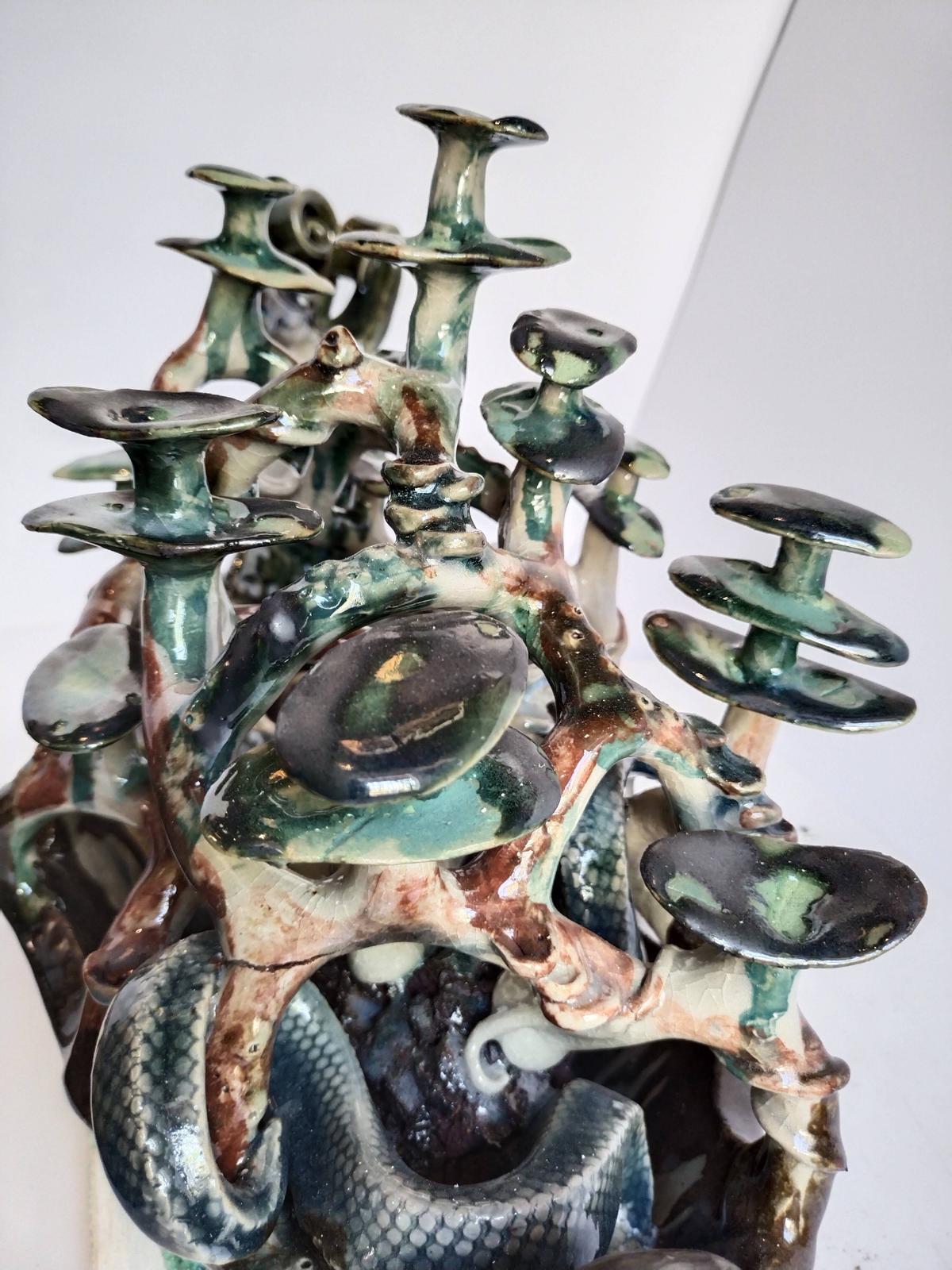
Thomas Louis’ ocean themes
A recent Instagram reel — replete with sharks, starfish, stingrays and sea anemones — that had people reaching out, was a commission for the Indian Navy, for its base in the Andamans. Another quick video has him throwing at his wheel while gypsy jazz artistes Robert Kres and Buland Shukla perform at his studio. Such posts have ensured engagement and sales, and he says, “after the gallery opened, all the designs I’ve been working on for years have sold out. It’s been crazy”.
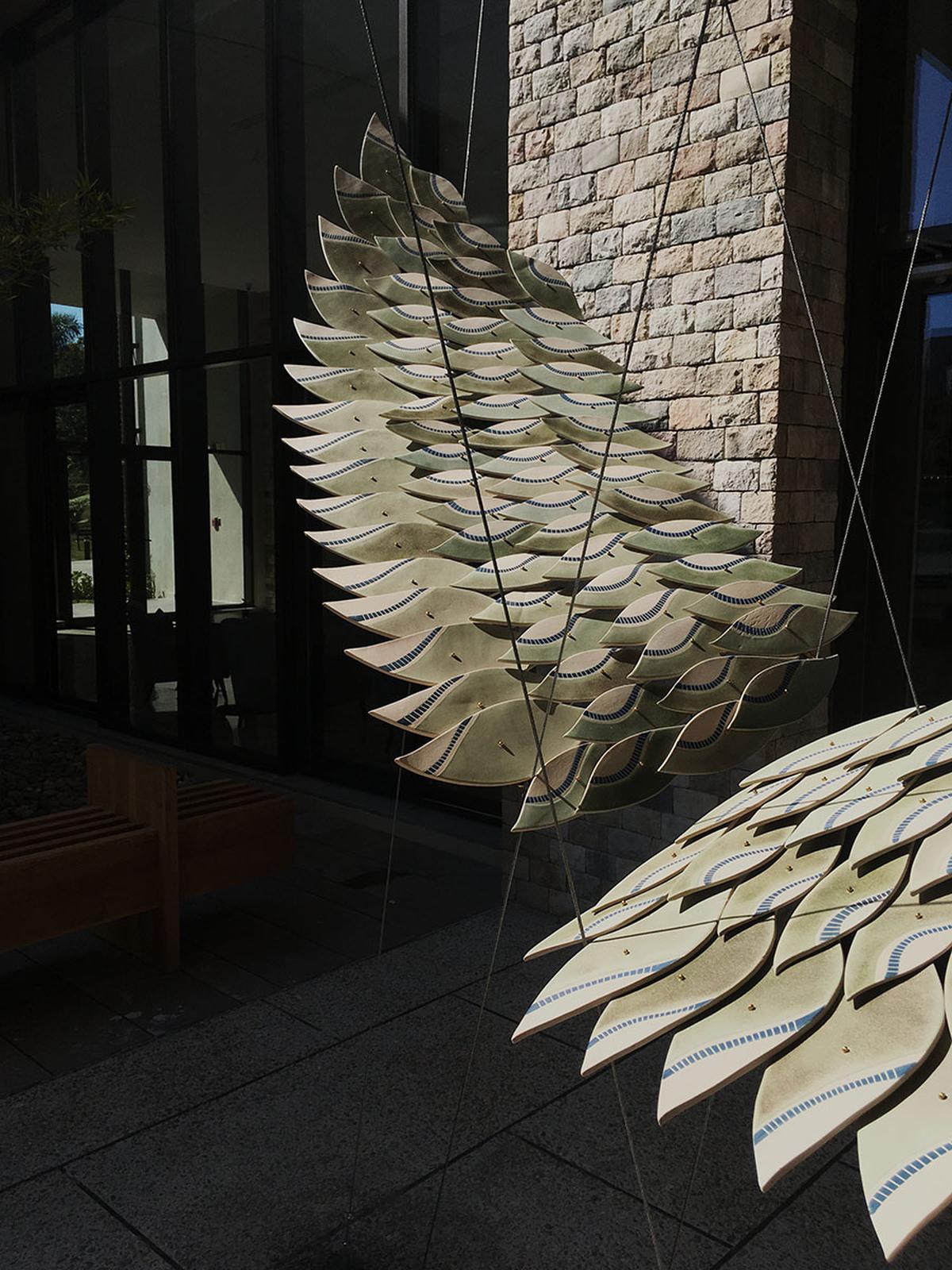
Rekha Goyal’s Flight of the Bird ceramic art installation
Some wheel and retail therapy
Although pottery is expensive — it costs a minimum of ₹3-₹5 lakh to set up a studio — potters are finding innovative ways to present their art: collaborating with chefs, making commissioned pieces, and bringing heritage craft into pottery.
“Newer avenues of retail are helping. Potters in Auroville, for instance, are getting large orders; there’s interior design collaborations; and online sales have transformed the market,” says Mumbai-based ceramic artist Anjani Khanna. Sometimes, it’s also the little things, “even something simple like the ability to transport work. People have learnt how to pack, the courier system is better — all of which is helping studio potters”. Khanna, who has been observing the steady uptick studio pottery’s enjoyed in the last few years, is one of the members behind debuting the Indian Ceramics Triennale in 2018 (see box) — which has helped show the public “what ceramics can be, what is possible” with the craft.
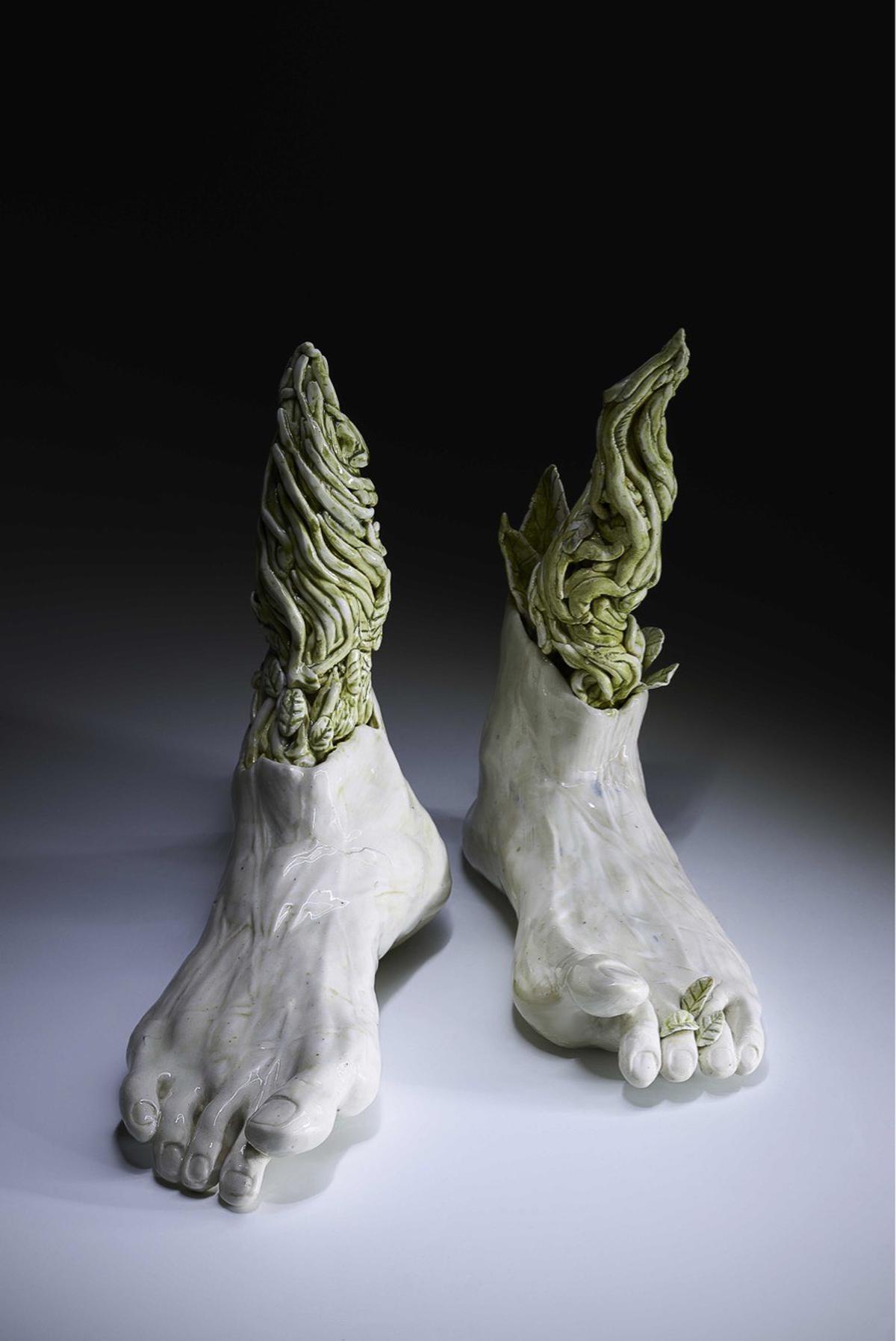
A sculptural piece from Rashi Jain
Mixed media experiments are gaining traction today, too. Louis, for instance, is collaborating with a furniture designer to make lamps that marry wood and ceramics, and with a jewellery designer to create murals that juxtapose his ocean-themed ceramics.
Sales aren’t the only thing booming; applications for classes are pouring in at studios across the country. “A lot of people have realised that working with their hands is the perfect antidote to the digital world,” says Louis. And pottery does this really well — the messiness of working with wet clay, the need to follow a process to get results, and the satisfaction of holding the final creation forces people to put their phones aside. (Louis charges ₹16,000 for a seven-day session.) According to Writer, Golden Bridge Pottery classes in Auroville have taken off after the pandemic, so much so that resident artist Aarti Manik says they are sustaining the studio more than the actual pottery they make there!
“I sense a rise in the need to connect with oneself, with nature, to work with one’s hands, to have and share experiences. Clay is all of this and much more,” says Mumbai-based ceramic artist Rekha Goyal. “It engages our visual sense, our sense of touch, and helps us de-clutter our minds and focus. This makes clay therapeutic, relaxing and a creative outlet that many of us are missing in our everyday life. I find that many young people are taking it up as a form of meditative and creative practice.”
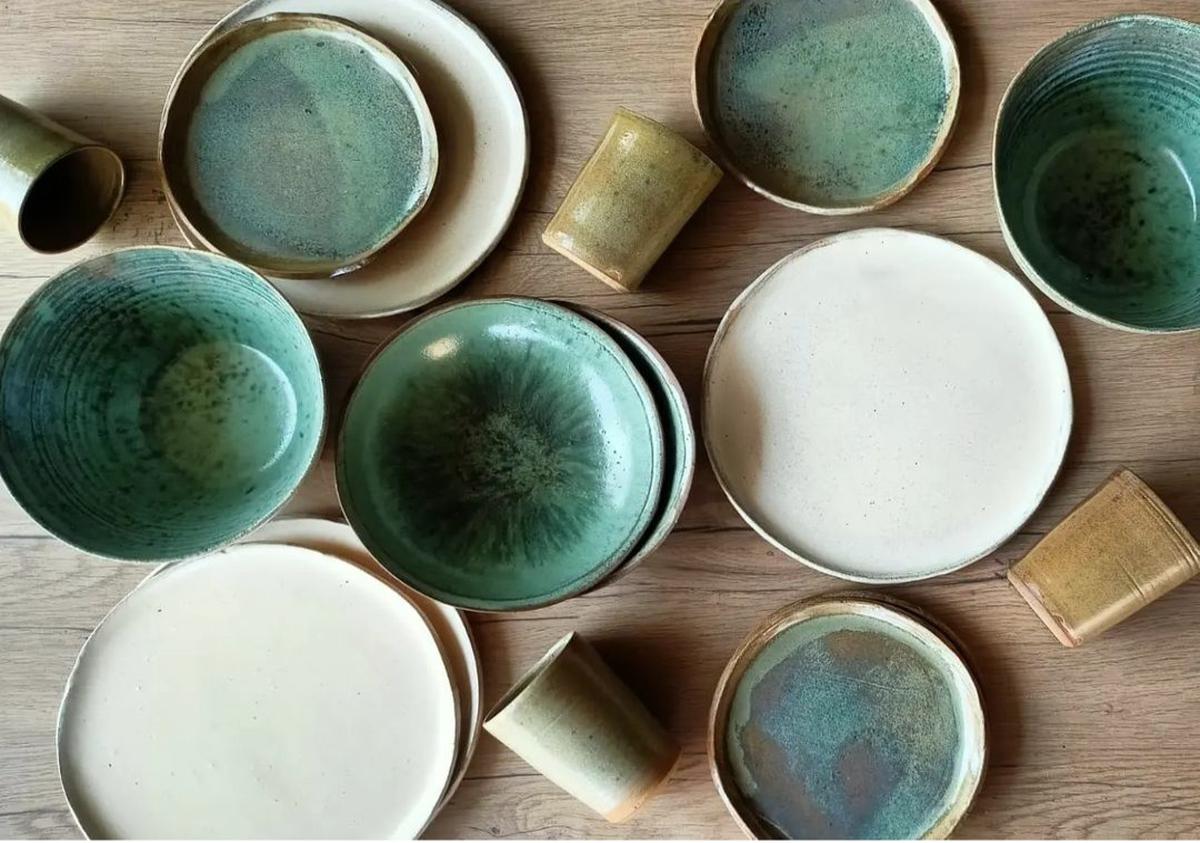
Tableware from Curators of Clay
Art for the table
Of late, Rohit Kulkarni of Pune-based Curators of Clay is busy with commissions for restaurants and chefs such as Vicky Ratnani. He attributes this to the plethora of chef-led restaurants that have burst on to the Indian culinary scene in the recent past, which has been a shot in the arm for studio pottery. Their first commission was the Kala Ghoda café, and then Masque further helped them. “People are warming up to contemporary, minimal design. Ceramics is now having a resurgence because of social media that has educated customers, who give us references of some potter sitting in Denmark,” he says.
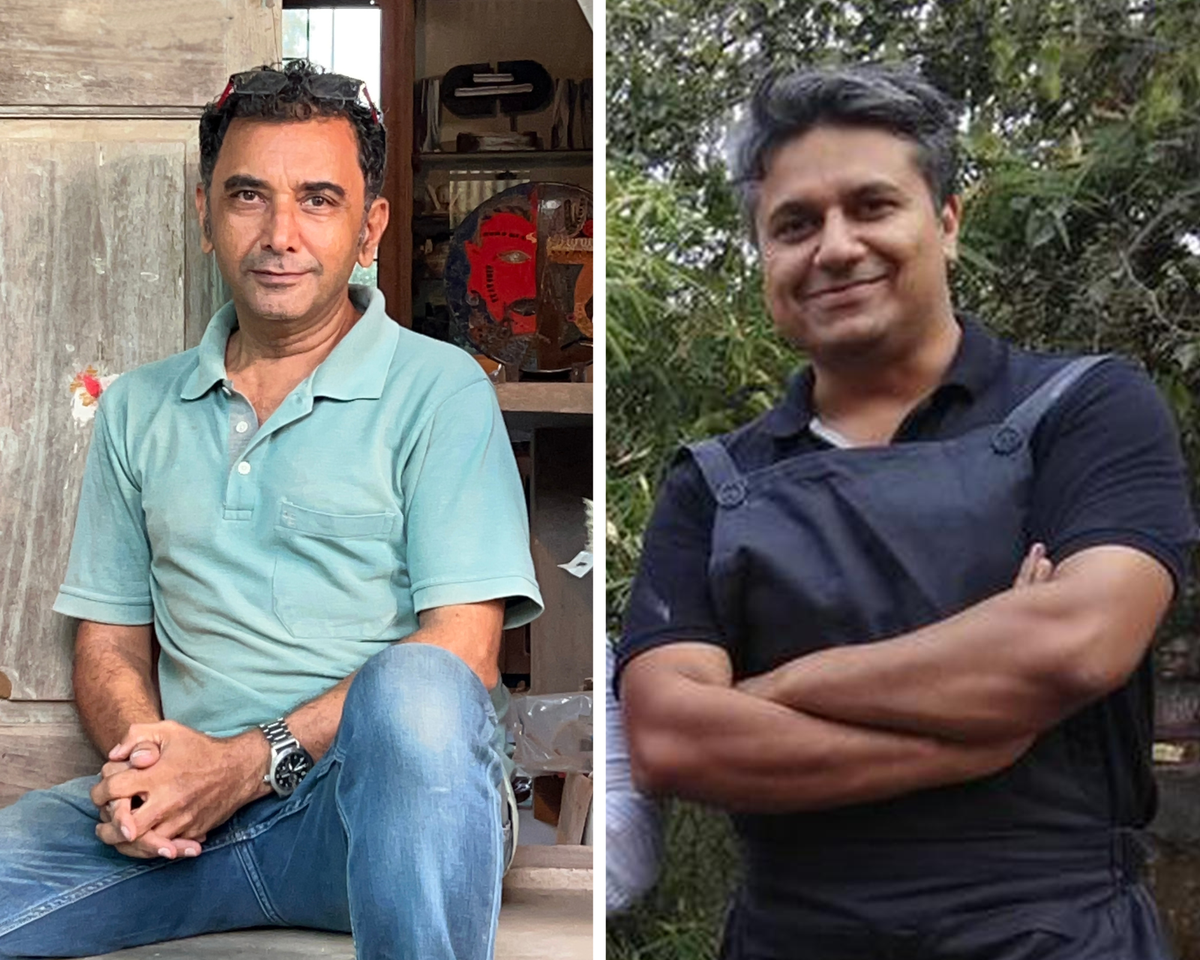
Adil Writer and (right) Rohit Kulkarni
Down South, Adil Writer (pictured above) of Mandala Pottery has been collaborating with restaurants for some time now, and work has increased post-pandemic. “We are doing restaurants in different cities: from Haiku in Hyderabad to Karan Johar’s Neuma in Mumbai. Currently, we’re working with two restaurants in Mumbai, one in Hyderabad, and a lot of little cafés — all new people who’ve come to us through word of mouth, following our work on Instagram, and understanding the value of handmade,” he says. Writer also hopes to work with Rishim Sachdeva, former chef with Olive Bar and Kitchen, again. “In 2017, Rishim had spotted our tableware at a café in Bandra called La Folie patisserie. He later landed up in Auroville and we started interacting. That’s how our tableware collaborations really started. Now, he has a restaurant in London, Tendril, and he’s been saying that he’ll be placing a big order. So, [our ceramics] are also going abroad.”
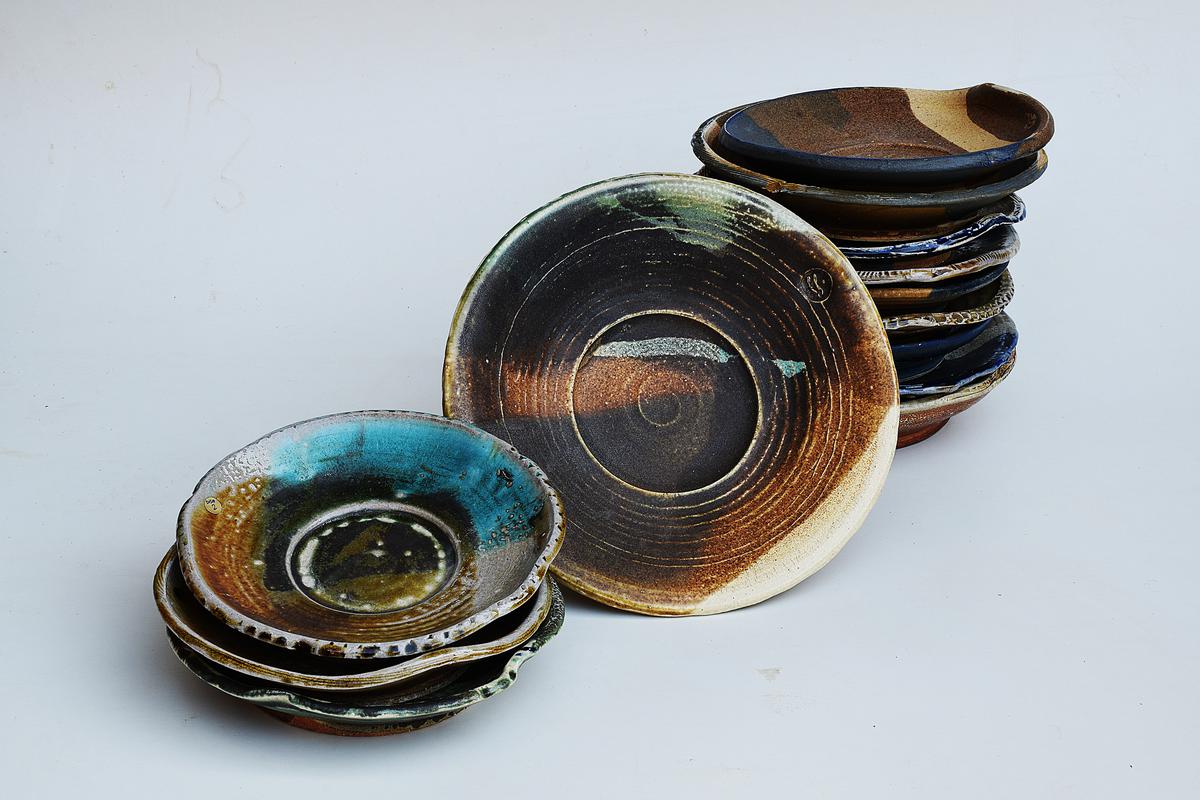
Stoneware created for Olive
“Many Indians still have a hard time understanding the labour, technique and logistical constraints involved to make even a simple spoon. [After initially working on tableware] I realised people could not fathom why a ceramic art plate was ₹5,000, regardless of the intricate design that had gone into it.”Kritika Soni Delhi-based Karasabi studio, which now works largely on commissioned pieces
Kritika Soni
Slow down, it isn’t hard
In her mango orchard in Andhra Pradesh, Nikita Dawar’s Slow Pottery has been gaining a strong foothold. Her ‘Clay Play Friday’ series on Instagram, where she demonstrated how to make everything from soap dispensers to incense smoke domes, boosted her online following (now a respectable 38.6K) and gained her students.
Nikita Dawar of Slow Pottery
| Photo Credit:
Prashant Pansari Photography
Classes atSlow Pottery
While Dawar, 32, believes that Indian consumers are no longer isolated with their knowledge about materials and techniques, as opposed to a decade ago, she says there’s an urgent need to underline the fact that pottery is a slow medium — so that people understand that it’s not a machine-produced medium with quick hacks that can be sold for a few hundred rupees. “You have to slow down, there is no other way. My teachers didn’t have to tell me this back in the day but now I have to tell my students. There is a challenge to get them to dive deeper. Some people open a studio and within three months start selling [which is not a good thing because the work will not be of high quality].”
Rashi Jain
Mumbai-based ceramic artist Rashi Jain echoes the sentiment. “Studio pottery took off during the pandemic. But the drawback is, Instagram and other social media can make pottery look easy. People expect fast results; they want to start earning money quickly. A lot of the works I’d seen online, when I saw them in person, I didn’t want to buy them! Online, it’s a bubble. You might be selling due to your algorithm, but it’s not quality work. So right now, in the studio potters’ movement, there is also a requirement of artists who teach [and learn] slowly, instead of just trying to just make money out of it.”
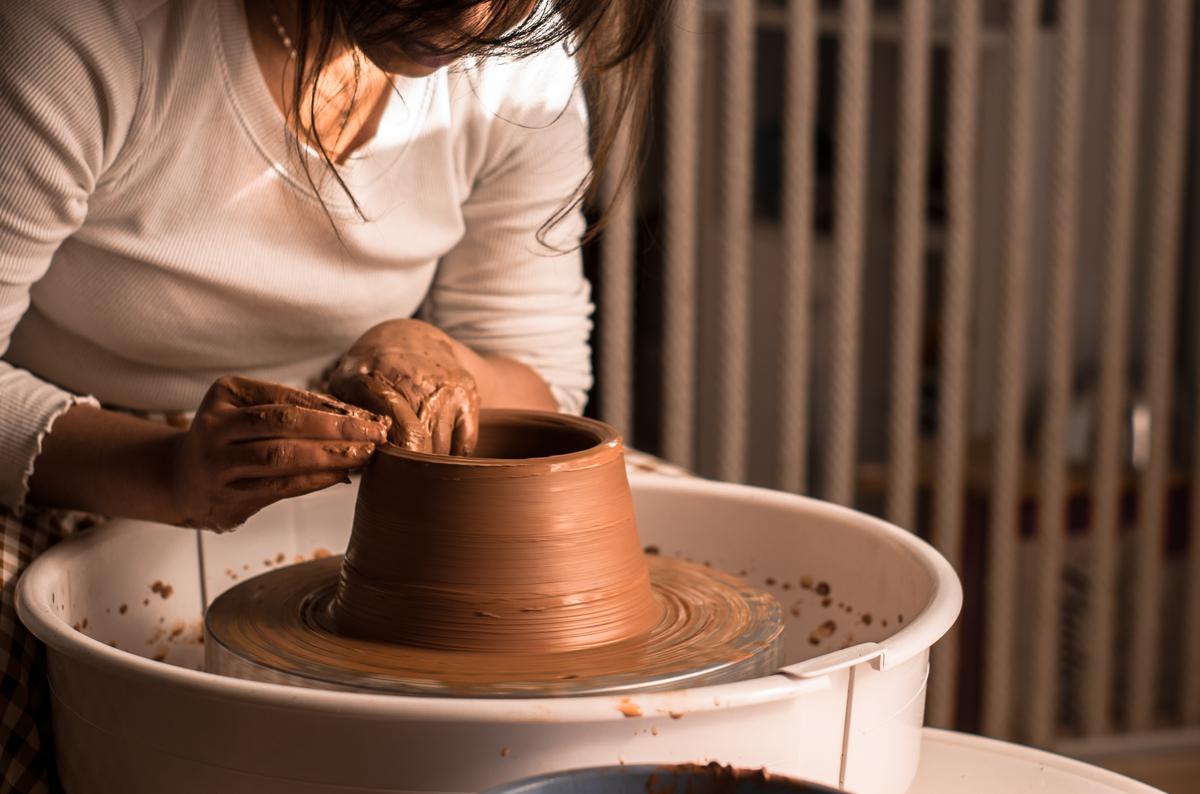
Lavanya Nagaraj of Trayah Pottery
‘ Clay is a layered medium’
Artistic experiments and a confluence of cultures undergird the way contemporary studio potters approach their work. Lavanya Nagaraj, 27, of the Bengaluru-based Trayah Pottery says that when her studio started seven years ago, pottery was just “black and blue, and forms were limited”. But as artists elevated themselves, they were able to connect with a younger audience with personal themes. “In my studio, there are students who are incorporating body positivity in their pieces. One of my students is taking bits of carving from the demolished temples of India and fashioning tableware out of them, juxtaposing such forms in a modern way,” she says.
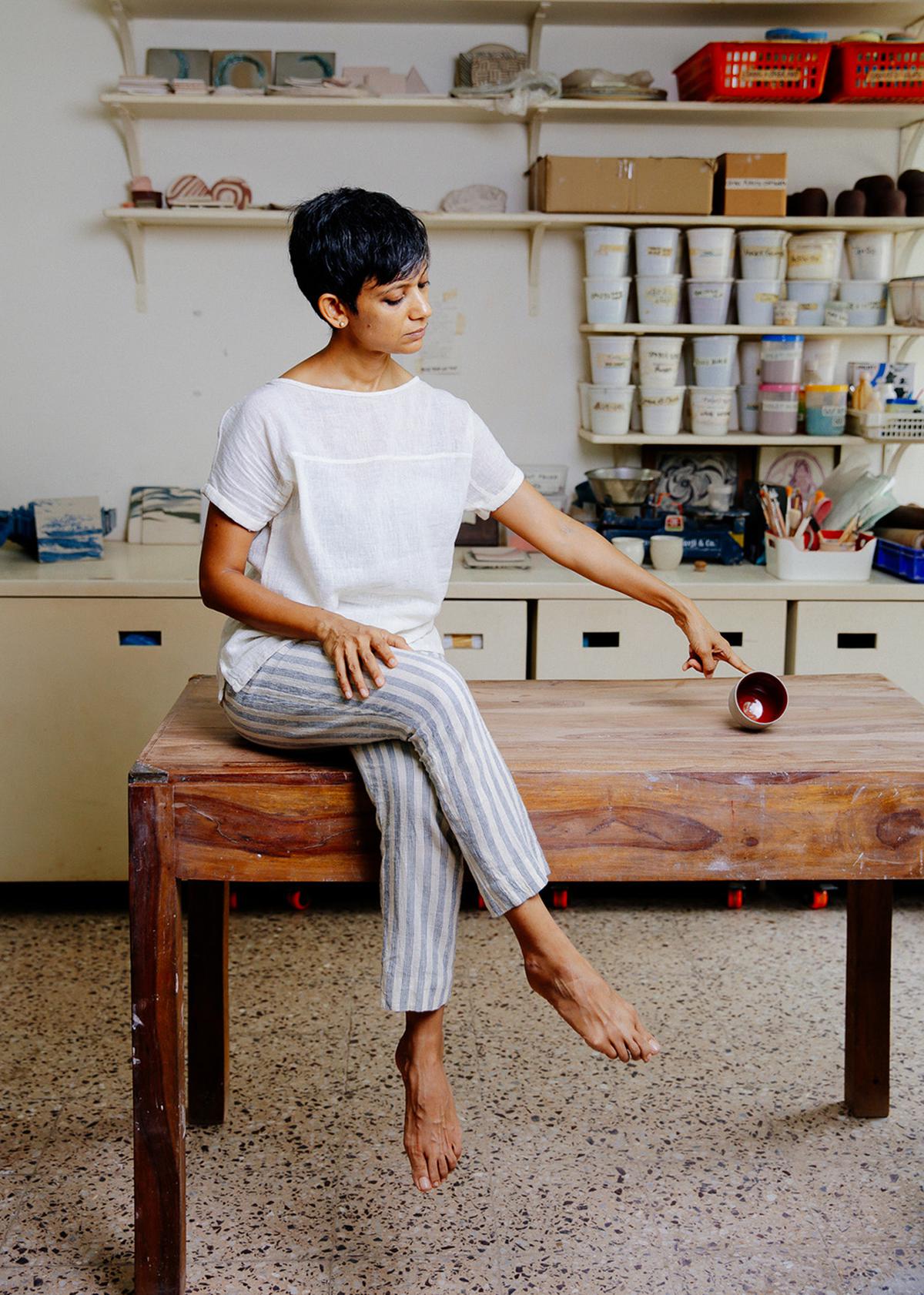
Ceramic artist Rekha Goyal
Meanwhile, Goyal, whose her love affair with studio pottery began at the age of 12 when her mother bought handcrafted tableware from South America (she was struck by the intricacy of the motifs and sense of proportions), brings the multi-dimensional layers of ceramics — “it can be visceral and textural, calm and serene” — into her work. “My body of work consists of installations in ceramics and these may take the form of a mural, a suspended installation, or art objects,” she says. “A lot of the work I create is site-specific and the scale has varied from miniatures to my largest installation which was seven storeys high.”
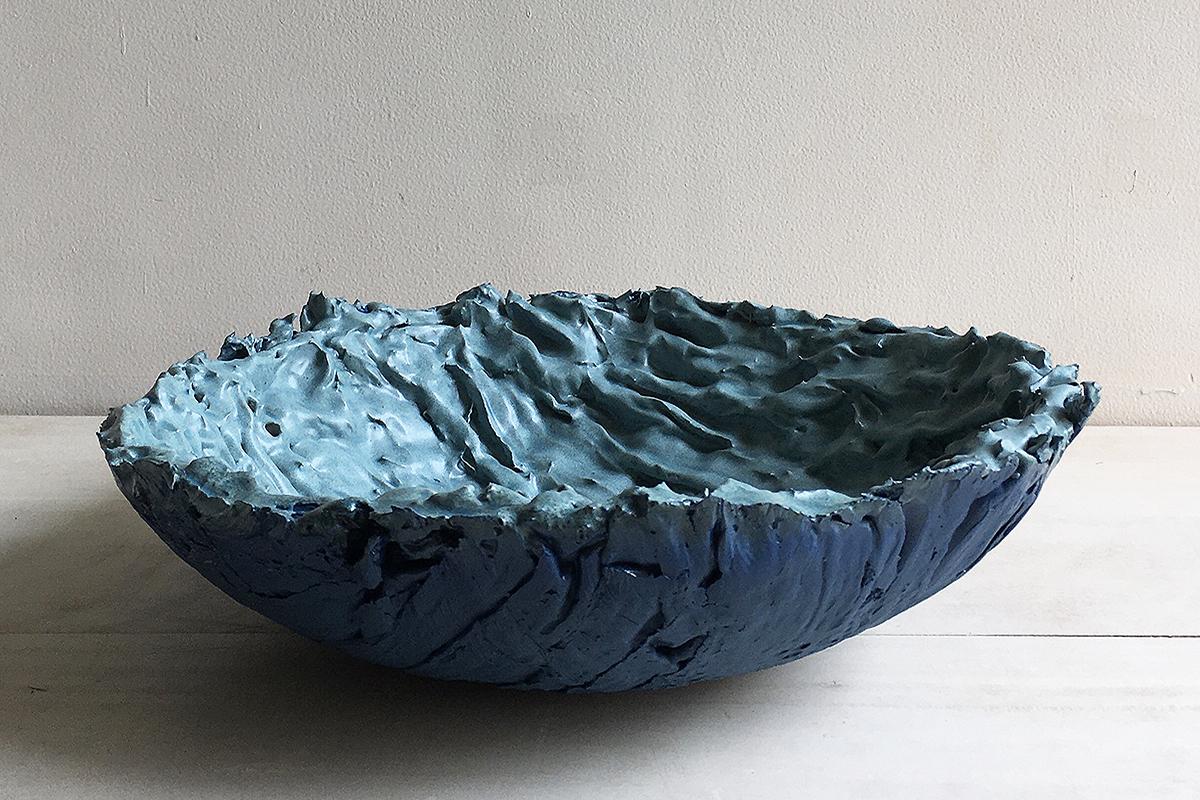
Goyal’s The Ocean in a Drop
The writer is an author and editor based in Mumbai.
With inputs from Surya Praphulla Kumar and Neha Mehrotra.
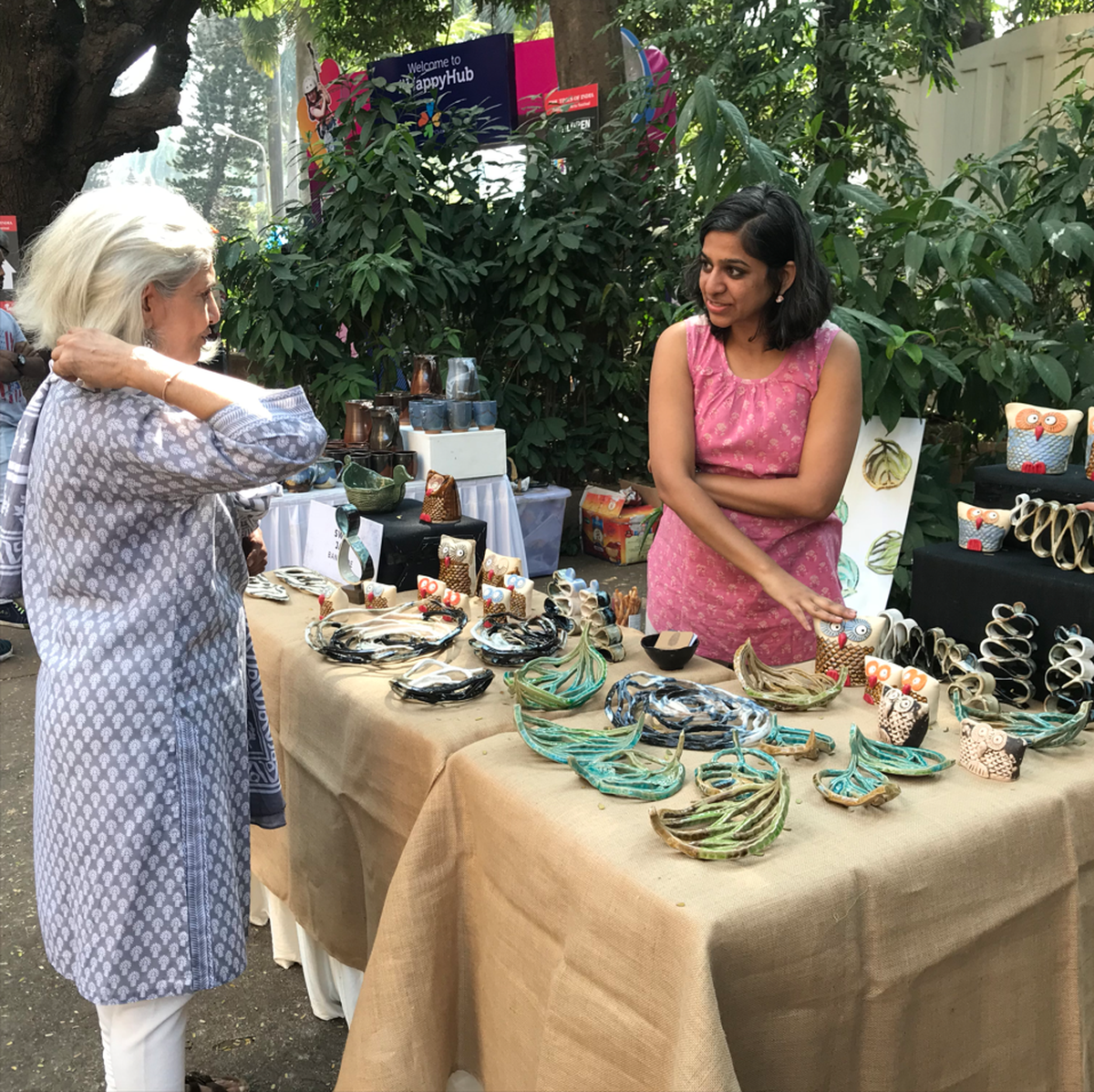
At the Kala Ghoda Studio Potters’ Market
The role of potters’ markets
“In 2009, there were very few contemporary potters in Mumbai. Anjani [Khanna] and I wanted to create a platform for ceramic artists who were creating wares catering to an urban lifestyle [back then, there were only a couple of galleries and a few boutiques]. So, we thought of starting a studio potters’ market. I got in touch with the Kala Ghoda Arts Festival, and they gave us space in the parking lot. We hired fruit carts, invited artists, and we sold well. Over the years, artists came from different cities, and they went back and started their own local chapters. Today, there are markets in more than 13 cities,” says Rashi Jain.
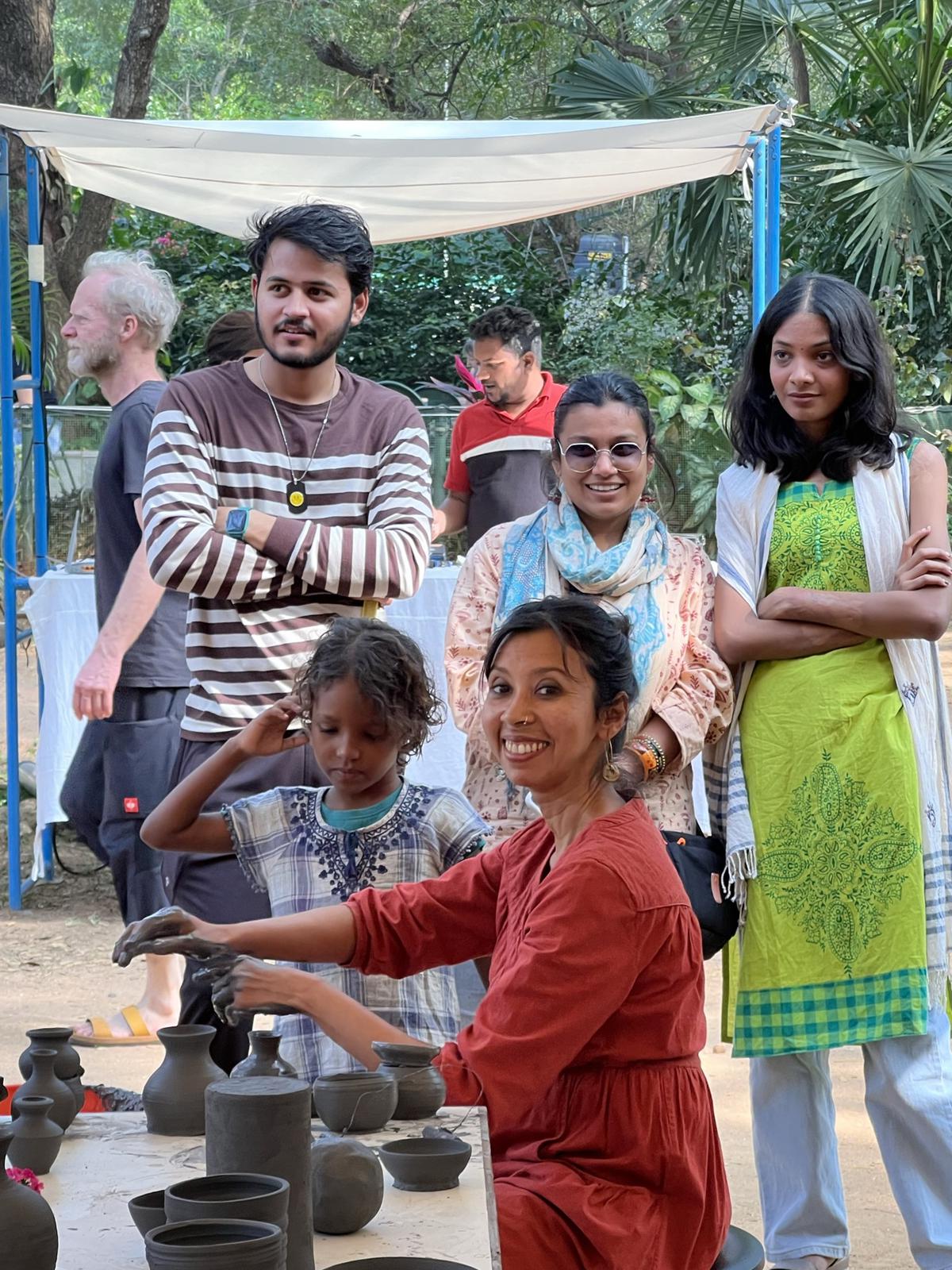
Nausheen Bari at the Auroville Potters’ Market
“Currently, the Studio Potters’ Market runs over 10 days, and every three days, we alternate 14 potters. We get applications from potters across the country, and we’ve recently also started inviting traditional potters to come and demonstrate their work. When I started doing claywork, there was no way you could live off it. Now, because of these markets, there’s more awareness, and more people are reaching out and collaborating with studio potters. We’ve seen so many potters grow because of them — they work throughout the year, and then hop from market to market, selling their wares.”
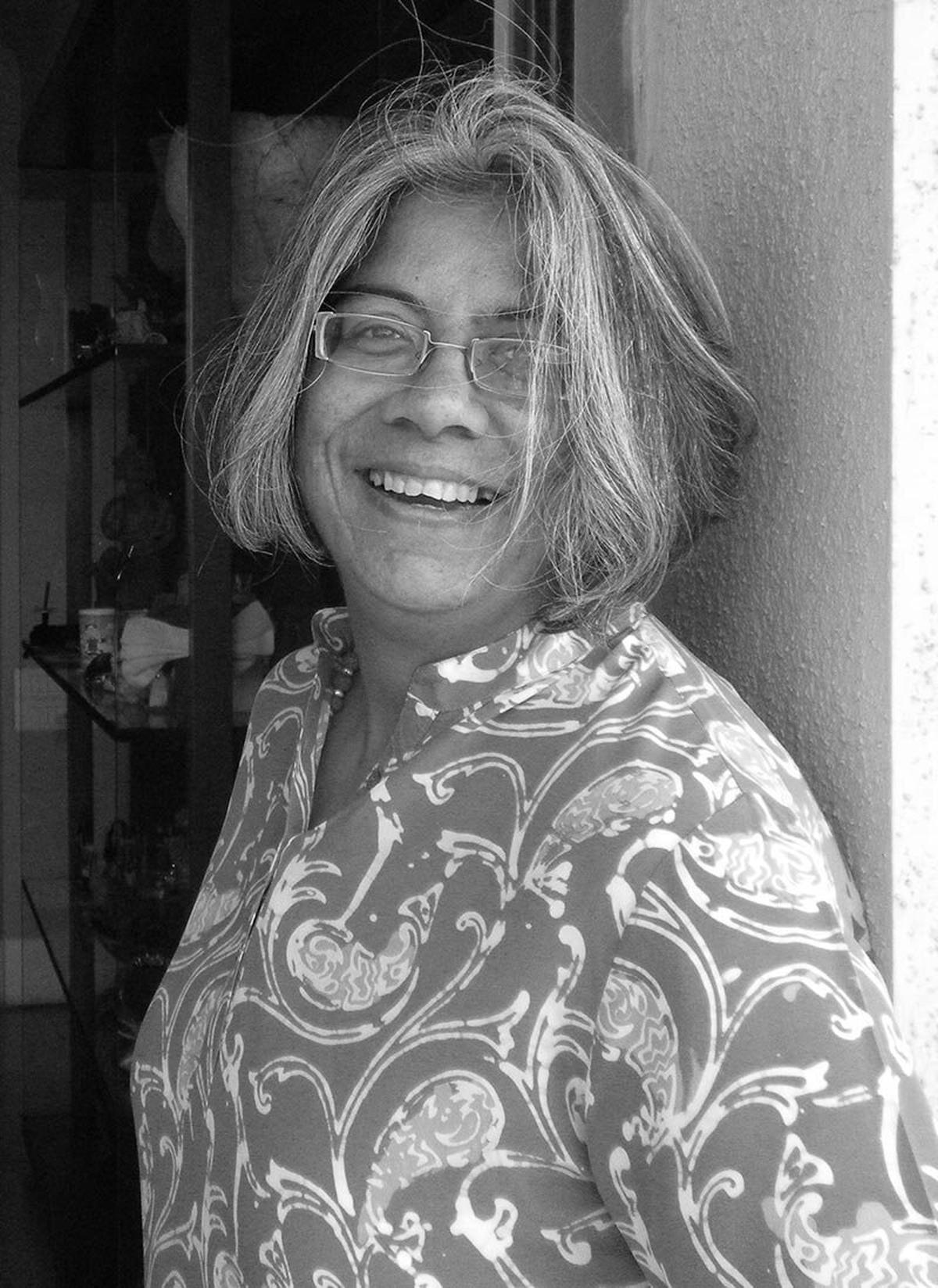
Anjani Khanna
Behind the Indian Ceramics Triennale
The Triennale is spiralling the conversation, creating links between the ceramic artists, the art world, and the people. We’ve been aware of how artists’ practices have been maturing, and we felt it needed to be on a platform that was international and accessible [and not just in people’s studios]. The idea was to push the boundaries of practices, to look at clay as a material and explore what is possible with it — whether it’s working with technology, scale, performance, or function,” says Anjani Khanna, co-founder-director of the Contemporary Clay Foundation, which organises the Triennale.
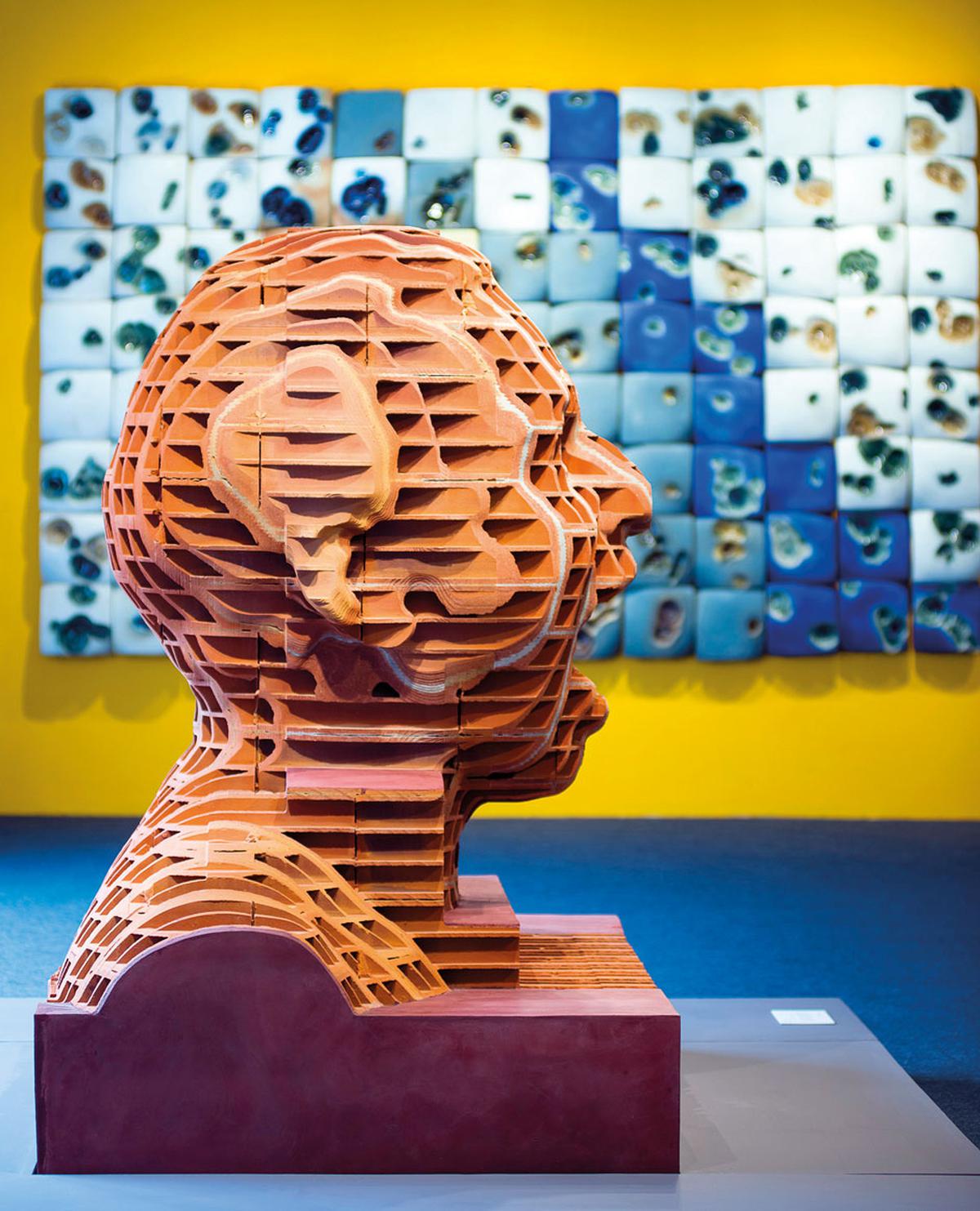
An exhibit from Breaking Ground
“The first edition, Breaking Ground, held at the Jawahar Kala Kendra in Jaipur was very well received. And now, after the pandemic, the response to the second edition’s open call has been fantastic. This time, with Common Ground, we are looking at the commonalities of diverse practices and of the human experience, and we’ve got 370 applications from 50 countries so far. Those selected will be showcased in January 2024, at our new venue, Arthshila, an art centre in New Delhi. But first, we are organising a show with 35 of the Breaking Ground artists on June 23 in Shantiniketan.”
For all the latest Entertainment News Click Here
For the latest news and updates, follow us on Google News.
